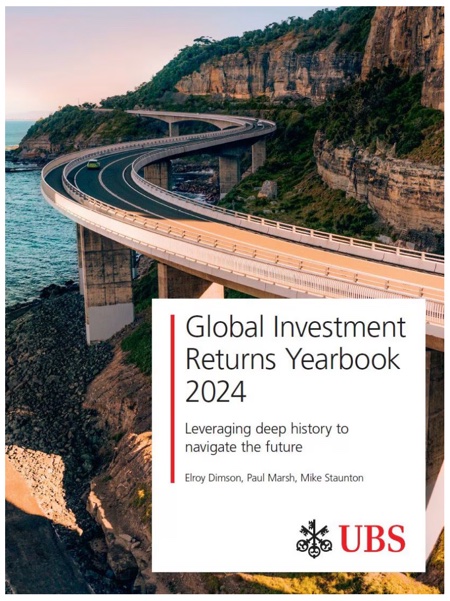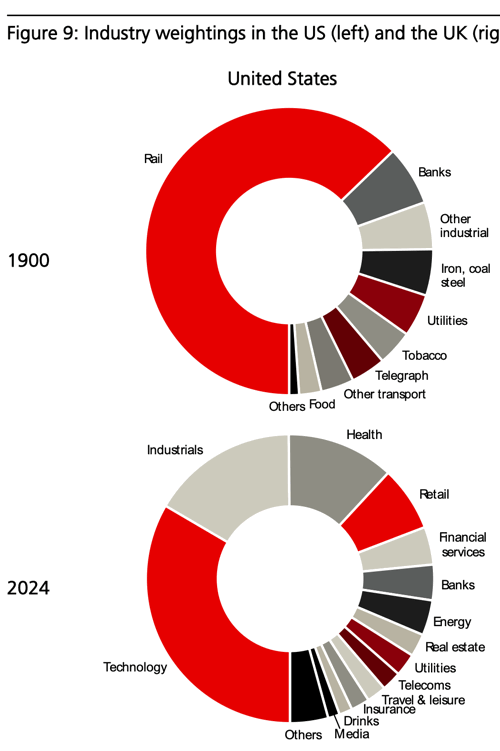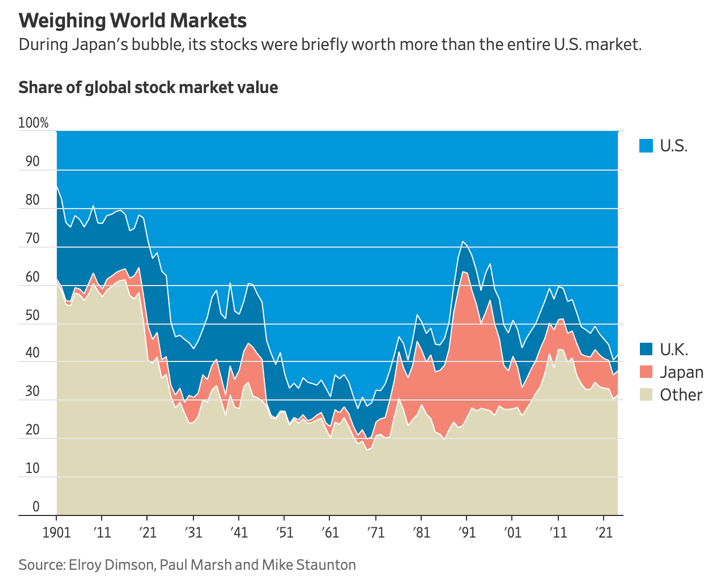
The 25th edition of the UBS Global Investment Returns Yearbook is available for free download in a 56-page PDF Summary Edition version on the UBS website. (Credit Suisse took over the publication of this yearbook in 2009, and UBS was voluntold to acquire Credit Suisse in 2023.) Hat tip to Abnormal Returns. This publication provides a nice “big picture” overview of the long-term performance of global financial assets:
With the depth and breadth of the financial database that underpins it, the UBS Global Investment Returns Yearbook is widely recognized as the unrivalled authority on long-term investment returns. We present a historical record of the real returns from equities, bonds, cash and currencies for 35 markets, spanning developed and emerging markets and stretching back to 1900.
The late Jack Bogle was often credit with the saying: “Don’t look for the needle in the haystack. Just buy the haystack.”
If you look at the entire haystack of individual companies, over time there are a lot of losers and a few big winners. If you buy the entire investable US stock market, or the entire investable world stock market, you can be sure that you own all the eventual winners. Even if you bought the S&P 500 index in the 80s or 90s, you would eventually own Apple, Google, Nvidia, and so on. For example, who knows who the final winner in the AI battle will be?
I recommend scrolling through the Yearbook Summary just to look at the cool charts with data from 1900. Check out how different the US stock market looked in 1900 vs 2024:

I think about international diversification in a similar way. Inside a recent WSJ article (gift article) about Japan’s Nikkei stock index reaching its previous high from 1989, there was an updated chart of the historical breakdown of global stock market value between the US and the rest of the world. Upon closer inspection, I realized that the chart is based on one from the UBS Yearbook.

The US made up only about 15% of the world’s market cap in 1900, had a recent low of about 40% in 2010, but after the recent run is now over 60%. What will happen in the future? If you think US stocks will outperform the rest of the world over the next decade or longer, you are then betting that this 60% number will continue to increase. And it might! It’s been as high as about 70% in the past.
As for me, I simply don’t know. I’ll hopefully have 40+ more years being invested in the stock market, and the haystack will continue to change. I choose to maintain diversification and “own the haystack” when it comes to both individual US companies and global countries. I prefer to know I’ll own the needles and have less worry, even at the cost of potentially somewhat lower returns.
 The Best Credit Card Bonus Offers – 2025
The Best Credit Card Bonus Offers – 2025 Big List of Free Stocks from Brokerage Apps
Big List of Free Stocks from Brokerage Apps Best Interest Rates on Cash - 2025
Best Interest Rates on Cash - 2025 Free Credit Scores x 3 + Free Credit Monitoring
Free Credit Scores x 3 + Free Credit Monitoring Best No Fee 0% APR Balance Transfer Offers
Best No Fee 0% APR Balance Transfer Offers Little-Known Cellular Data Plans That Can Save Big Money
Little-Known Cellular Data Plans That Can Save Big Money How To Haggle Your Cable or Direct TV Bill
How To Haggle Your Cable or Direct TV Bill Big List of Free Consumer Data Reports (Credit, Rent, Work)
Big List of Free Consumer Data Reports (Credit, Rent, Work)
Speak Your Mind